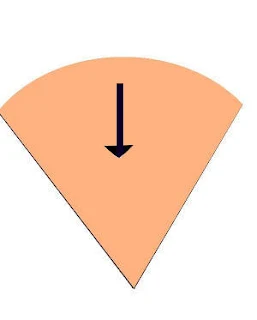Rugelach
Upon seeing the photograph, more than one might have thought they were croissants. However, they are not. They are called Rugelach, and although they are considered predecessors of French croissants along with Austrian kipferl, apart from the shape, they share little resemblance.
French croissants are made with a pastry similar to puff pastry, which is not used in Rugelach. Additionally, original croissants do not have any filling, while in Rugelach, the filling is crucial. Although nowadays you can find croissants filled with various ingredients, they are not common in France. Asking for a croissant filled with cheese and ham in a Parisian bakery might not be well-received.
Rugelach has its origins in the Ashkenazi Jewish communities of Poland, where they remain popular. They are also common in Israel, being a staple in cafes, bars, and restaurants, similar to churros in Madrid, Donuts in New York, or Pain au Chocolat in France. Rugelach is also consumed in the United States and wherever Jewish communities exist.
Ashkenazim are descendants of Jews who settled in western Germany after the diaspora. They later migrated in different waves to Central and Eastern Europe, developing their own language called "Yiddish," a combination of German, Hebrew, and other Slavic languages.
The other major Jewish groups are Sephardim and Mizrahim. Sephardim are descendants of Jews expelled from Spain who settled in North Africa and various parts of the Ottoman Empire. They developed Ladino, a language not mutually intelligible with Yiddish. Mizrahim settled mainly in North Africa and the Middle East, speaking languages derived from Persian, Arabic, or Aramaic.
Each of these geographically isolated groups contributed significant knowledge and culinary practices to the societies where they sought refuge. After the establishment of the State of Israel, many migrated there but maintained their distinct identities. Today, you can find both Ashkenazi and Sephardic synagogues in Israel, as well as restaurants and bakeries reflecting the culinary culture of their respective communities.
The term "Rugelach" comes from Yiddish, although its etymology is not clear. In Polish, croissants are called "rogaliki," a word derived from "horn," similar to Italy, where croissants are called "cornetti." Therefore, Rugelach might simply mean "horn," which would make sense.
The method of making Rugelach, especially regarding the dough, is not entirely clear. Original ones might not have included cream cheese, and this ingredient might have been added when Rugelach came to the United States. However, in Poland, there are Rugelach that do incorporate cream cheese, so the supposed American influence is not entirely accurate.
The filling can vary widely, from jam, nuts, cinnamon, and honey to chocolate or even meat fillings. The shape of these sweets is also variable, ranging from croissant-like to straight or square, depending on personal preference.
To make Rugelach with jam, nuts, and cinnamon, a classic filling for these pastries, cream cheese is used in the dough.
INGREDIENTS (makes 32 pastries):
For the dough:
- 250 grams (9 oz) of all-purpose flour
- 200 grams (7 oz) of cold butter, cut into cubes
- 200 grams (7 oz) of cold cream cheese (Philadelphia, Quark, or similar)
- 1/4 teaspoon of salt
For the filling:
- 200 grams (7 oz) of sugar
- 1 teaspoon of ground cinnamon
- 1 cup of finely chopped walnuts
- 1/2 cup of jam (strawberry, apricot, or your preferred flavor)
- Powdered sugar (optional)
In a large bowl, mix sifted flour and salt. Add softened butter (leave it outside the refrigerator for an hour if it's warm or briefly microwave it), and cream cheese. Mix with hands until the dough is homogeneous.
Divide the dough into 4 equal parts and form a ball with each. Wrap them in plastic wrap and refrigerate for at least 1 hour or until firm.
While the dough balls firm up, in a small bowl, mix sugar, cinnamon, and chopped walnuts. This forms part of the filling (the jam is spread on the dough).
Preheat the oven to 180°C (356°F). Line a baking tray with parchment paper.
Take the dough balls out of the refrigerator. Work with one dough disc at a time. On a floured surface, roll out the disc into a circle of approximately 25 cm (10 inches) in diameter.
Spread a thin layer of jam over the dough and sprinkle the sugar, cinnamon, and walnut mixture on top.
Cut the circle into 8 triangles using a knife or pizza cutter. The cut should resemble a shape similar to this:
You will have 8 triangles (and with 4 dough balls, you should get 32 rugelach unless there are last-minute accidents).










Comments